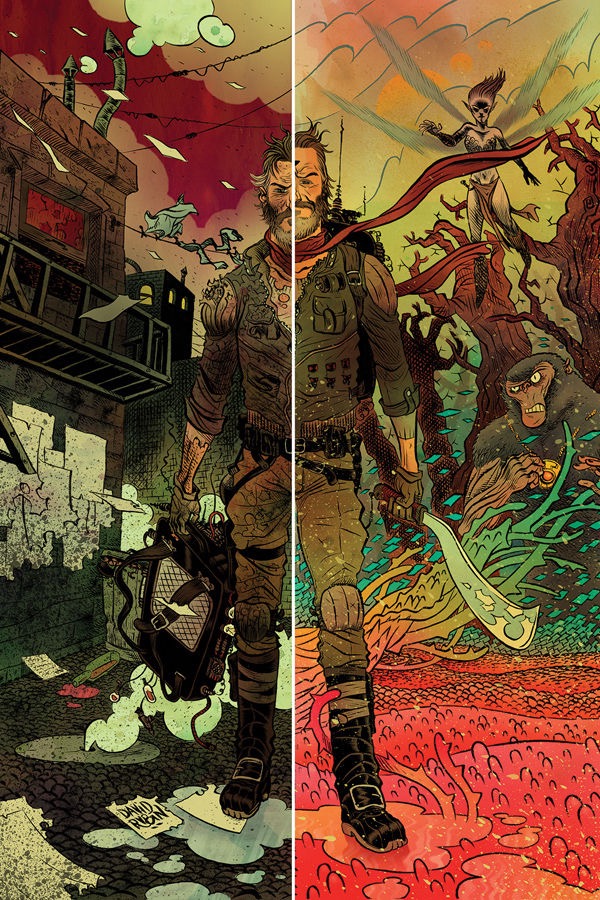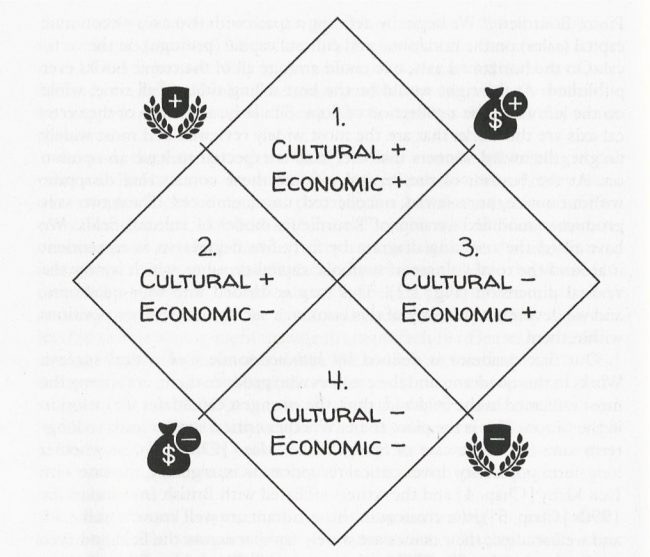§ Nice Art: here’s the cover to ETHER #1, a new book from Dark Horse by Matt Kindt and David Rubin. Rubin is a fantastic artist and one of the Spanish Fever crew that was touring around here for a few days. I’ll have a little bit of a write up on that later, but here’s some art to whet your appetite.
§ Jim Zub storified some thoughts on the DC Writer’s Workshop, making it or not making it. Basically this sounds like an incredibly taxing undertaking for all concerned.
§ Nick Gazin went to the The New York Art Book Fair with lots of pictures. It looks like a cool event and I would love to go someday except…
All in all, the NYABF was swollen, sweaty, and loud this year. There were some great things, but all the good things could have fit into the museum’s courtyard. The presence of the major galleries and publishers is unnecessary. This past weekend also happened during the Small Press Expo in Maryland and at least one or two other book fairs in New York. There’s too many book fairs and not enough good books. What the hell is that about? People can’t space out their zine and book events?
§ Speaking of SPX, the Comics Bulletin crew of Alison Baker, Christian Hoffer, Daniel Elkin, J. A. Micheline, Joseph Kyle Schmidt and Ray Sonne went, and wrote a roundtable, and they were charmed, as all are, as Elkin writes:
SPX is a gathering of tribes, a safe space for the outliers, a cavernous and sonorous embrace of what was, what is, and what will be. It is the anti-con insofar as it oozes truth in the way that water drips from a sediment-encrusted valve seal in the kitchen faucet. It possesses more genuine hope in its embryonic certainty than a velvet roped night club on a Friday night, and, rest assured my friends, you’re all getting laid by the artistry and the excitement it contains. “People over product” is the reverberating mantra that engulfs your brain in the midst of your end-of-summer, mid-September weekend at the North Bethesda Marriott, and, by Sunday evening, you are exhausted, overwhelmed, and suffused with a deep and abiding contentment, awash in the knowledge that Comics Can Be Spectacular.
§ Bart Beaty and Benjamin Woo wrote a book called The Greatest Comic Book of All Time: Symbolic Capital and the Field of American Comic Books and it’s a light read. No not really, as the link shows, in a review by Robert Boyd, it’s a scholarly examination of what people make …lists about?
The conceptual framework they use is “symbolic capital.” This is derived from the work of sociologist Pierre Bourdieu. They write, “Any given work or creator will have differing levels of economics (i.e., sales), social (i.e., buzz and connections), and cultural (i.e., prestige) capital, but symbolic capital represents an overall index of social capital.” For the most part, Beaty and Woo only look at economic capital and cultural capital. They have somewhat quantifiable ways of looking at each. For economic capital, they can look at actual sales of the work of a given cartoonist or specific book. For cultural capital, they look at how often a cartoonist or book has been written about in peer-reviewed academic journals as recorded in the Modern Language Association International Bibliography or how often it has been listed in the Bonner Online-Bibliographie zur Comicforschung, which lists scholarly but not necessarily peer-reviewed articles, including those in The Comics Journal. They created a chart of four quadrants that any given comic book creator or work might fall in. The top spot is reserved for those that have high levels of both economic and cultural capital—that have sold well and are highly esteemed by scholars.
This will require close reading.
§ Here is a massive interview with a fellow named Alan Moore. The author wandered around for six hours with Moore and managed to jot down some of the bearded one’s utterances.
“We’re talking here about heaven and hell, we’re talking about them as being simultaneous and present, that all the worst moments of your life forever, that’s hell; all the best moments of your life forever, that’s paradise. So, this is where we are. We’re in hell, we’re in paradise; both together, forever. I’m saying that everywhere is Jerusalem. That in an Einsteinian block universe, where all time is presumably simultaneous, then everywhere is the eternal heavenly city.”
§ It’s been a while since we learned any gruesome details about the Blake Leibel murder case, so here you go. As you may recall, Leibel, a sometime comics writer and heir to a large Canadian fortune, murdered his wife in a particularly horrific manner that some think was foreshadowed in his books.
§ The Comic Con International is hiring a Social Media Manager. If you live in SoCal might want to check that out.
undefined







§ BETTERIDGE’S LAW: “Does Trade-Waiting ‘Hurt’ a Comic?” @ http://bookriot.com/2016/09/14/does-trade-waiting-hurt-a-comic/
Compared to the average academic books, The Greatest Comic Book of All Time: Symbolic Capital and the Field of American Comic Books is a breeze, believe it or not. I found the book entertaining and useful in making me think about how all those top 10 lists (and reading lists in classrooms) get created. Why does Maus get rated so highly, for example? Is it just because it’s the “best”?
Comments are closed.